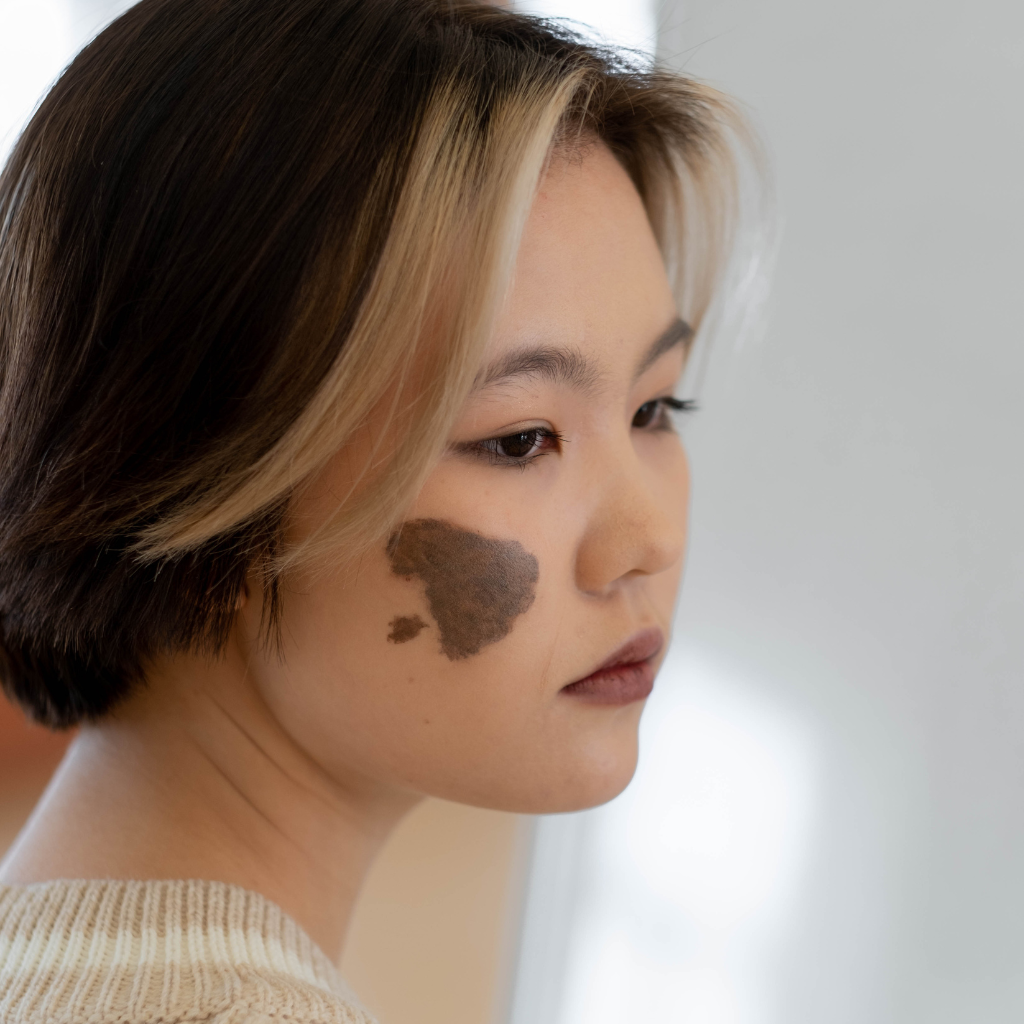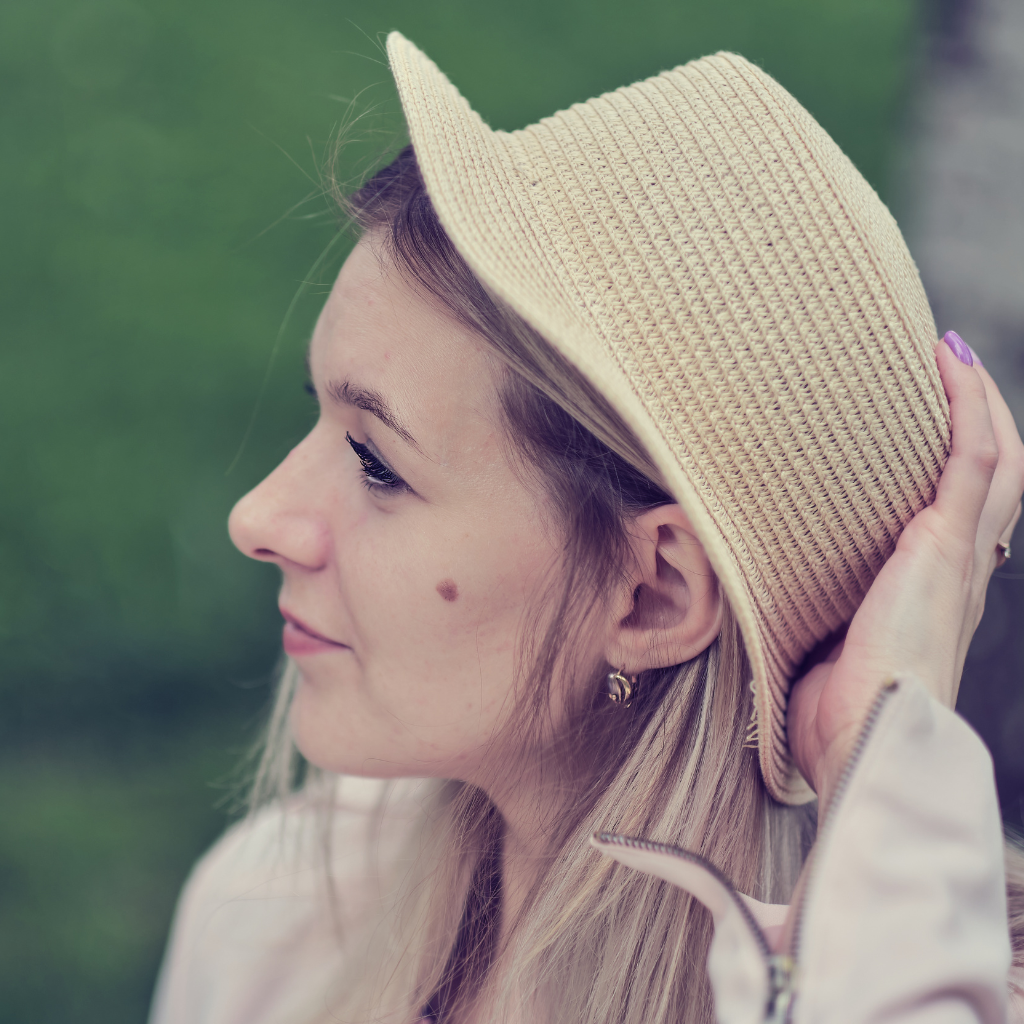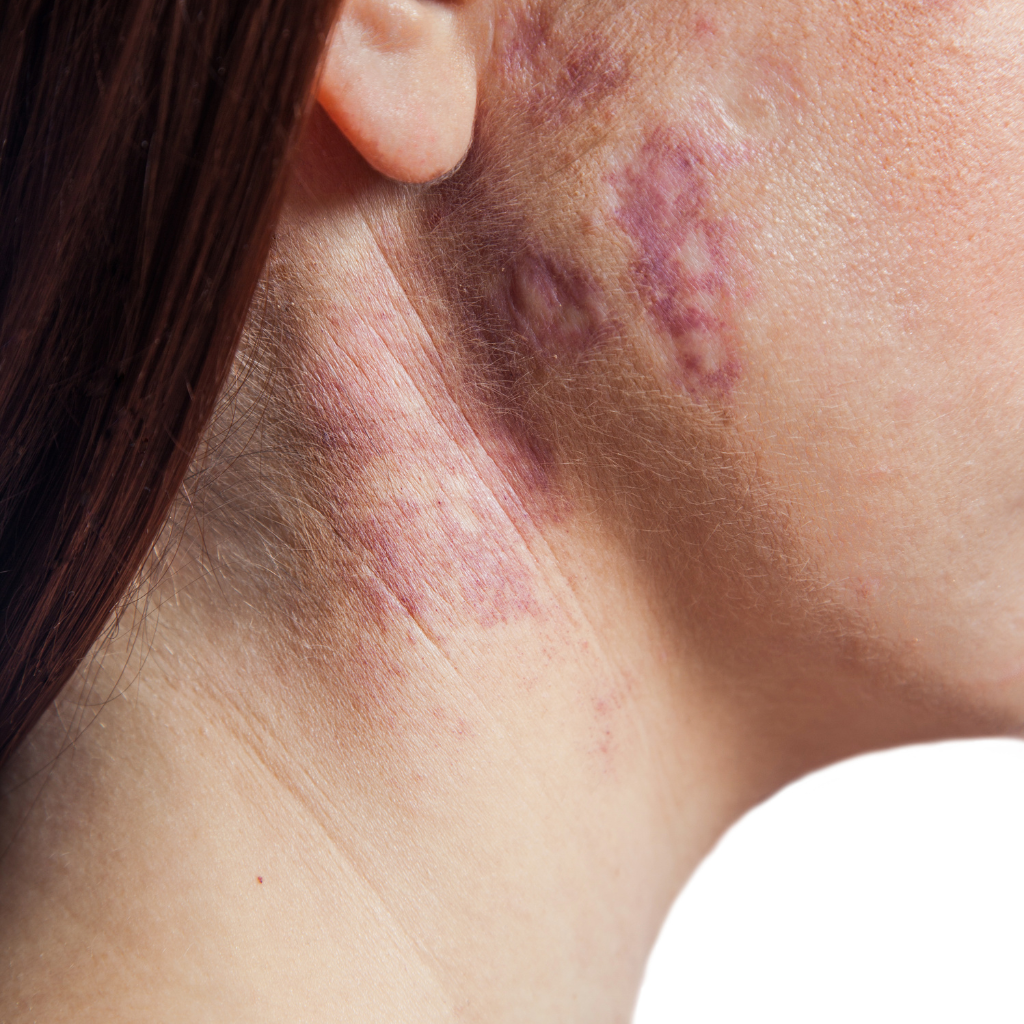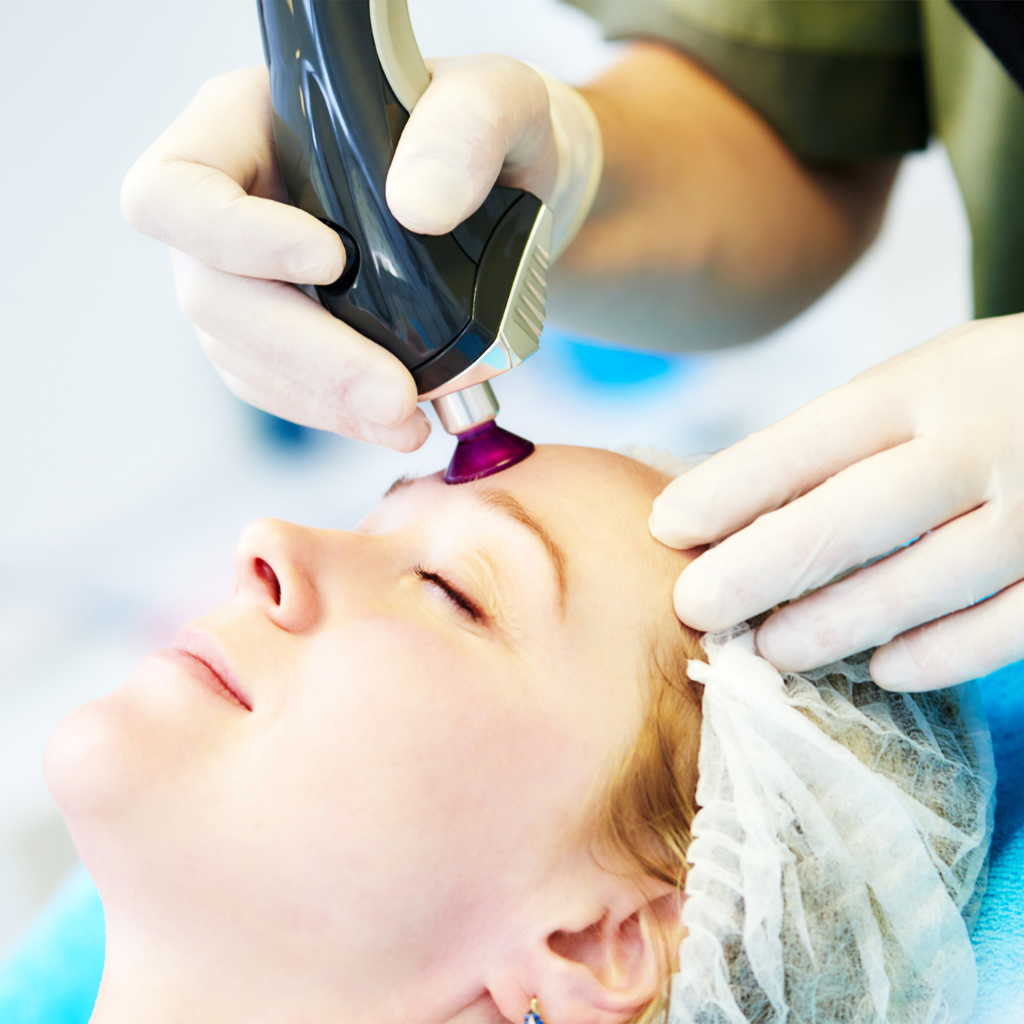What Is a Birthmark? Discover the Types, Including Pigmented Birthmarks
- Home
- Mole, Wart & Skin Tag Removal
- what is a birthmark

A birthmark is a congenital skin anomaly visible at birth or shortly thereafter, categorized mainly into pigmented and vascular types. Pigmented birthmarks, such as congenital moles and café au lait spots, arise from melanocyte clusters, displaying varying colors and sizes. These marks often carry no profound health implications but need monitoring for any changes in appearance. Understanding the diverse types of birthmarks enhances awareness of potential cosmetic or medical concerns, inviting further exploration into their nature and treatment options.
How do birthmarks form?
A birthmark is a congenital, visible irregularity on the skin present at birth or shortly afterward.
These markings can range from small, unnoticeable spots to significant discolored areas and are common, affecting approximately 10% of newborns worldwide.
Their development is often linked to the overgrowth of blood vessels, melanocytes, smooth muscle, fat, fibroblasts, or keratinocytes, typically without any underlying pathological significance.
What is a birthmark?
Birthmarks are congenital irregularities on the skin, often visible from birth or shortly thereafter. These marks vary in size, shape, and color, reflecting different types of pigmentation and vascular anomalies.
Among the types of birthmarks, pigmented birthmarks are especially prominent. These include congenital moles, café au lait spots, and Mongolian spots. Pigmented birthmarks result from an excess of pigment cells within the dermal layers.
Congenital moles, for instance, are formed by clusters of melanocytes. Café au lait spots exhibit a light brown coloration due to increased melanin production in localized areas.
Mongolian spots, typically found in individuals of East Asian descent, manifest as blue-gray patches, caused by entrapment of dermal melanocytes during fetal development.
Why are birthmarks present at birth?
The formation of birthmarks is primarily attributed to localized concentrations of melanocytes or abnormal blood vessel development. Birthmarks are present at birth due to the clustering of skin cells that differ from surrounding tissues.
Pigmented birthmarks, such as congenital melanocytic naevi and café au lait spots, arise from melanocyte accumulations. Conversely, port wine stain birthmarks result from malformations in capillary networks.
Most birthmarks occur during fetal development, manifesting distinctly in newborn babies. These congenital anomalies are generally benign, representing a natural variation in human pigmentation or vascular structure.
Understanding the cellular mechanisms involved offers insights into their origins, emphasizing why birthmarks are inherent and evident in infants from birth.

What are the types of birthmarks?
Birthmarks are primarily categorized based on their pigmentation and origin.
Pigmented birthmarks, such as congenital nevi and cafe au lait spots, differ considerably in their melanocyte concentration and potential developmental implications.
While congenital nevi are often melanocytic and may have a higher risk of developing melanoma, cafe au lait spots are characterized by a lighter pigmentation and typically present no such risk.
What is the difference between congenital nevi and cafe au lait spots?
Understanding the distinctions between congenital nevi and café au lait spots is fundamental in studying pigmented birthmarks.
Congenital nevi are melanocytic neoplasms present at birth, appearing as textured, colored marks that might grow proportionally with the individual. The color can vary from light brown to black, making the surface smooth or hairy.
In contrast, café au lait spots are flat, light tan patches that typically appear during infancy. These spots derive their name from their coffee-with-milk coloration and are generally uniform in pigmentation.
Dermatologists often monitor both types of markings for medical reasons, including potential malignancy in congenital nevi, and for cosmetic reasons. However, café au lait spots are usually benign and require minimal intervention.
How do vascular birthmarks differ?
Vascular birthmarks, stemming from blood vessels that do not form correctly, vary significantly in appearance, cause, and developmental timing.
Hemangiomas, for instance, are benign tumors that usually appear a few weeks after birth and can grow rapidly before eventually regressing.
In contrast, port-wine stains are present at birth and are characterized by their flat, pink, or reddish-purple appearance due to dilated capillaries. In contrast, salmon patches, also present from birth, typically fade as the child grows.

What are hemangiomas?
Hemangiomas are a common type of vascular birthmark characterized by an abnormal proliferation of blood vessels. These raised birthmarks can appear shortly after birth and exhibit various growth phases.
Hemangiomas are classified into superficial, deep, or mixed types, depending on the depth of the affected blood vessels within the skin. While most hemangiomas will eventually regress and disappear completely as a child grows, some may require intervention.
Treatment options include laser treatment and surgery, which are considered when the hemangioma causes complications or does not improve as expected. The choice of treatment depends on the specific characteristics and location of the hemangioma, aiming to minimize potential risks while promoting ideal cosmetic outcomes.
Can birthmarks be removed?
Certain birthmarks may be removed or considerably lightened through medical interventions.
Options for removal vary, with laser therapy emerging as a particularly effective method for targeting and diminishing vascular birthmarks.
Over time, some birthmarks, such as certain macular stains, naturally fade without intervention.
How to remove a birthmark
Depending on their type and severity, birthmarks can be removed through various medical interventions. Removal strategies are recommended when they affect significant cosmetic concerns or lead to medical complications.
Here are the primary methods used to remove a birthmark:
- Laser Therapy: Utilized primarily for pigmented birthmarks, laser therapy targets melanin to lighten the mark, often requiring multiple sessions.
- Surgical Excision: Certain types of birthmarks that appear raised or are potentially problematic can be birthmark removed surgically using a small scalpel. This method is generally used when other treatments are ineffective.
- Cryotherapy: Applying extreme cold to destroy abnormal skin cells, cryotherapy is another option, particularly for small, superficial birthmarks.
Consultation with a doctor is essential to obtain expert advice on the appropriate intervention.
Do birthmarks fade over time?
Birthmarks are widespread skin anomalies, often present from birth or developing within the first few months of a child’s life.
While many birthmarks are flat and harmless, the likelihood of fading varies by type. Birthmarks usually fade, particularly salmon patches, which commonly appear on newborns and diminish as the child ages.
Conversely, some types, such as certain pigmented nevi, may persist and should be monitored for changes. The rate at which birthmarks fade can be influenced by genetic and environmental factors.
Laser therapy: An effective method for birthmark removal
While many birthmarks may fade over time, others require medical intervention for removal, with laser therapy emerging as a prominent method. This technique is particularly effective for certain birthmarks such as pigmented birthmarks and strawberry marks.
- Selective Photo thermolysis: Laser therapy targets the abnormal pigmentation or blood vessels without damaging the surrounding skin. The energy from the laser is absorbed by the pigmented cells, causing them to break down and be absorbed by the body.
- Multiple Sessions: Depending on the depth and size of the birthmark, numerous laser sessions may be necessary to achieve the desired results.
- Safety and Efficacy: Clinical studies have shown laser therapy to be a safe method for reducing the appearance of birthmarks, although complete removal might not be possible for all types.

What do birthmarks mean for your health?
Most birthmarks are benign and do not imply serious health issues; however, some may signal underlying conditions or a higher risk of skin cancer.
Thorough dermatological evaluations are recommended for birthmarks that change in size, shape, or color, as these can indicate malignancy.
Research shows that certain vascular birthmarks, like congenital melanocytic nevi, are associated with a greater risk of melanoma, necessitating ongoing surveillance.
Are birthmarks associated with skin cancer?
How do birthmarks relate to skin cancer risks? Generally, birthmarks are benign skin lesions with very low potential for malignancy. However, there are specific considerations:
- Malignant Transformation: In rare cases, certain birthmarks can undergo malignant transformation. For instance, congenital melanocytic nevi, more significant than 20 cm, carry a higher risk of developing into a type of skin cancer called melanoma.
- Syndromic Associations: Sturge-Weber syndrome, associated with port-wine stains found on the face, does not increase cancer risk but involves neurological and ocular complications.
- Monitoring Changes: Any birthmark, especially those areas of the face, should be monitored for changes in color, size, or texture, which could signify malignancy.
Do birthmarks indicate any underlying conditions?
Do birthmarks signify deeper medical issues? While most birthmarks do not indicate underlying conditions, certain types can be associated with more serious health concerns.
“Stain” birthmarks, including port-wine stains, may suggest the presence of syndromes like Sturge-Weber syndrome, mainly when located on the face and present at birth. The abnormal development of blood vessels causes these marks and can be permanently visible throughout a child’s life.
Additionally, large congenital melanocytic nevi, a type of pigmented birthmark, carries a risk of developing melanoma. As a result, birthmarks should be monitored, mainly if changes in size, color, or texture occur, as they could indicate potential health risks not immediately apparent at birth.
Are birthmarks usually harmless?
While certain birthmarks can indicate severe medical conditions, it is essential to note that most dermatological anomalies are benign and pose no threat to health. The perception and impact of birthmarks vary considerably, yet clinically, they are often inconsequential:
- Prevalence and Harmlessness: Birthmarks are common, with many children born with at least one. They typically do not require treatment or affect a child’s general health.
- Psychological Impact: Some birthmarks, especially those on visible areas like the neck or face, can affect a child’s self-esteem during the formative years of a child’s life.
- Home Remedies and Misconceptions: Despite myths, no evidence suggests that topical treatments like olive oil alter their appearance.
What Are Congenital Moles, Mongolian Spots, and Melanocytic Naevi?
Congenital moles, known medically as congenital melanocytic naevi, are present at birth and may vary in size; their potential for malignancy is correlated with their size and morphological characteristics.
Mongolian spots are benign, flat, congenital birthmarks with a blue-gray appearance, typically found on the sacral area of a newborn and usually fade during childhood.
An increased number of melanocytes characterizes congenital melanocytic naevi, and understanding these formations is essential for evaluating associated health risks and determining appropriate monitoring strategies.
Congenital moles and their significance
Birthmarks, including congenital moles, Mongolian spots, and melanocytic naevi, are pigmentations that appear on the skin at birth or shortly thereafter.
Congenital moles, specifically, carry clinical significance due to their potential implications:
- Risk of Melanoma: Congenital melanocytic nevi, particularly those of significant size, are more likely to develop melanoma. Regular monitoring and, in some cases, prophylactic removal may be recommended based on size and location.
- Genetic Implications: Large or multiple congenital moles can be indicative of genetic syndromes, including neurocutaneous melanosis, necessitating further genetic evaluation and surveillance.
- Cosmetic and Psychological Impact: Depending on their visibility and size, these moles can affect the psychological well-being of an individual, sometimes necessitating surgical intervention for cosmetic reasons.
Understanding Mongolian spots
Mongolian spots, clinically known as congenital dermal melanocytosis, are non-raised, bluish-gray pigmented areas commonly present at birth. These marks typically occur in the lumbosacral area but may appear elsewhere on the body. They are more prevalent among individuals of Asian, Hispanic, and African descent. The pigmentation results from melanocytes located deep within the dermis rather than the epidermis, which is typical for other pigmented lesions.
Feature | Description |
Appearance | Bluish-gray, flat patches |
Common Locations | Lumbosacral area, buttocks |
Prevalence | Higher in Asians, Hispanics, Africans |
Pathogenesis | Melanocytes in the dermis |
Typical Resolution | Often fades by age 3-5 years |
Mongolian spots generally fade and often disappear entirely by early childhood without treatment.
Congenital melanocytic naevi: What you need to know
While closely related to the previously discussed Mongolian spots, congenital melanocytic naevi (CMN) represent a distinct type of birthmark, characterized by their occurrence at birth and potential to cover large body areas.
Here are the key aspects of CMN:
- Classification: CMNs are categorized based on size—small, medium, or large/giant. The larger the nevus, the greater the potential for complications.
- Potential Risks: Large or giant CMNs carry a higher risk of developing melanoma, particularly during childhood. Regular monitoring by a dermatologist is recommended.
- Treatment Options: Treatment may include surgical removal for aesthetic reasons or to reduce melanoma risk, laser therapy, or careful observation.
Decisions often depend on the nevus’ size, location, and associated symptoms.
Conclusion
Birthmarks, including congenital moles, Mongolian spots, and melanocytic naevi, are primarily benign skin anomalies with varied etiologies. The classification into pigmented and vascular types aids in diagnostic and therapeutic approaches. While most birthmarks pose minimal health risks, monitoring for changes in size, shape, or color is vital. Some may require removal for aesthetic reasons or due to potential complications. Continuous research is essential to understand their development and implications fully.

Dr. Sheena Majella is a certified dermatologist and the leading skin specialist at Tune Aesthetics. With a deep passion for skin health and beauty, she combines medical expertise with advanced aesthetic treatments to help clients look and feel their best.





